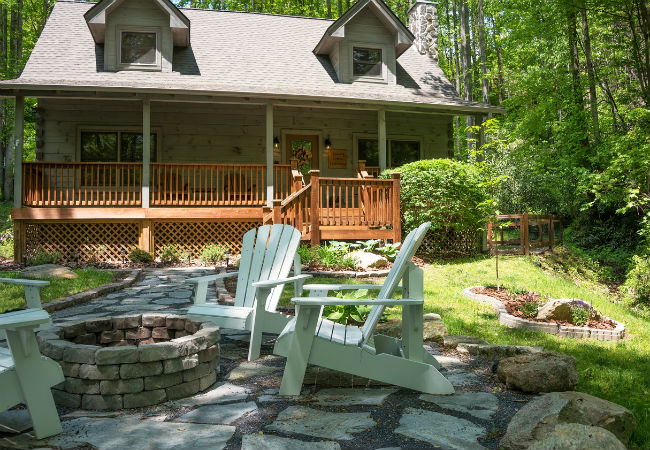

We may earn revenue from the products available on this page and participate in affiliate programs. Learn More ›
Fire pits are a hot commodity! These attractive backyard additions can dress up a drab yard with mesmerizing flames while serving as a gathering place for afternoon barbecues, evening drinks, and late night s’mores. Before building a fire pit, however, you should become fully informed as to local regulations, construction requirements, and potential hazards. So study up here with these dos and don’ts so you won’t get burned!
RELATED: 9 Creative Ways to Build a Backyard Hangout
DIY Fire Pit Dos and Don’ts
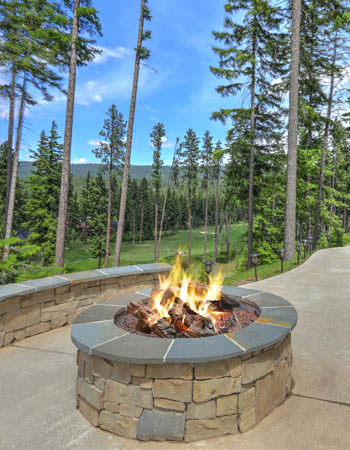
Construct the most attractive, functional and safe fire pit possible by carefully considering the following 12 dos and don’ts of fire pit building. You’ll learn how to legally and safely create a solidly built memory-building garden feature that you’ll treasure for years.
DON’T build a fire pit without approval from local authorities.
Your local government, homeowners’ association, and house deed may impose restrictions on the size, location, material, and fuel type of home fire pits—or forbid them altogether—due to the potential for fire-related property damages. If your fire pit flouts these rules, you may be fined. Contact your municipality’s planning office and homeowner’s association, and review the deed for your house to ensure that you comply with all restrictions and obtain any permits required for fire pit installation.
DO consider accessibility when choosing a fire pit size.
Building a fire pit yourself offers room for customization of every detail, size included. Local ordinances permitting, your fire pit should ideally measure between 36 and 44 inches wide (including the width of the walls) to accommodate multiple people around it while maintaining an intimate setting. Aim for a fire pit height of 12 to 14 inches from the base of the walls to the top of the walls if you want guests to be able to prop their feet on it while seated around it on standard 18-inch-tall, dining-height patio chairs. Increase the pit height to 18 to 20 inches tall if you want to be able to comfortably sit directly on the edge of the pit.
DON’T position fire pits in hazard-prone zones with unfavorable winds.
Plan to install your fire pit on a patch of level ground in an open area of the yard that’s at least 15 feet from other residences and at least 10 feet from property lines, flammable structures such as wooden sheds, bushes, and trees. In addition, use the National Water and Climate Center’s Wind Rose tool to identify the prevailing wind direction in your location; you want to ensure that you won’t have smoke blowing into your home through open doors or windows.
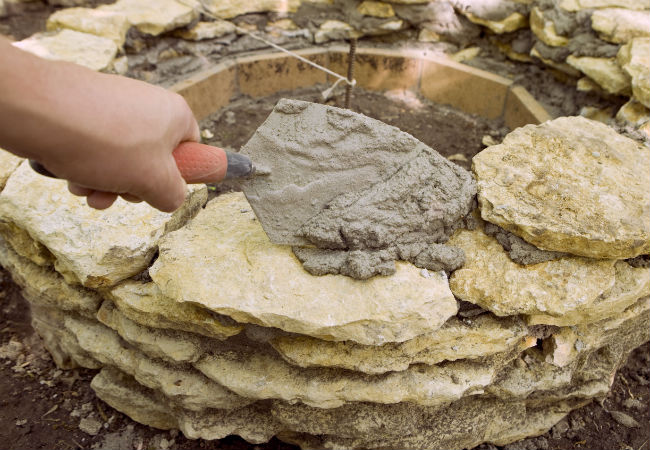
DO explore different build options
Once you start researching the type of fire pit you want to build, you might be surprised at the large number of options you’ll find. You’ll want to spend time considering all the types and designs. Think about how you’ll use the fire pit. Will you want to cook over the pit or will it be primarily for warmth and gazing? Consider where in the yard/garden you’ll place it, keeping in mind that you’ll want it well away from structure. Think about how big you want your DIY fire pit to be, and what shape you’re looking for. Would a square or rectangular fire pit fit your “style” better than a traditional round shape? Do you want an in-ground, above-ground, or tabletop DIY fire pit? Do you want to use found, recycled, or purchased materials? Concrete, bricks, pavers, stones from the yard — you’ll want to explore all your options before choosing your ultimate design.
DON’T use flammable or non-porous, water-retaining building materials.
Fire pits commonly consist of an inner wall, an outer wall, a “cap” (i.e., a flat tabletop-like surface around the opening at the top of the pit), and decorative stones, pavers or glassas the base of the pit. The inner wall must be made of fireproof building materials, optimally fire brick; the outer walls should still be heat-resistant but can be made of traditional brick, stone, masonry blocks (consisting of brick, concrete, granite, etc.), concrete pavers, or even heat-resistant outdoor stucco or tile. Flagstone is an ideal material for the fire pit cap. No part of the fire pit should be made with flammable materials (e.g., plywood shipping pallets) or non-porous materials that hold water, such as pea gravel, river rocks, or compressed concrete blocks; these materials can trap steam and eventually explode.
RELATED: How to Build a Fire Pit in Your Backyard
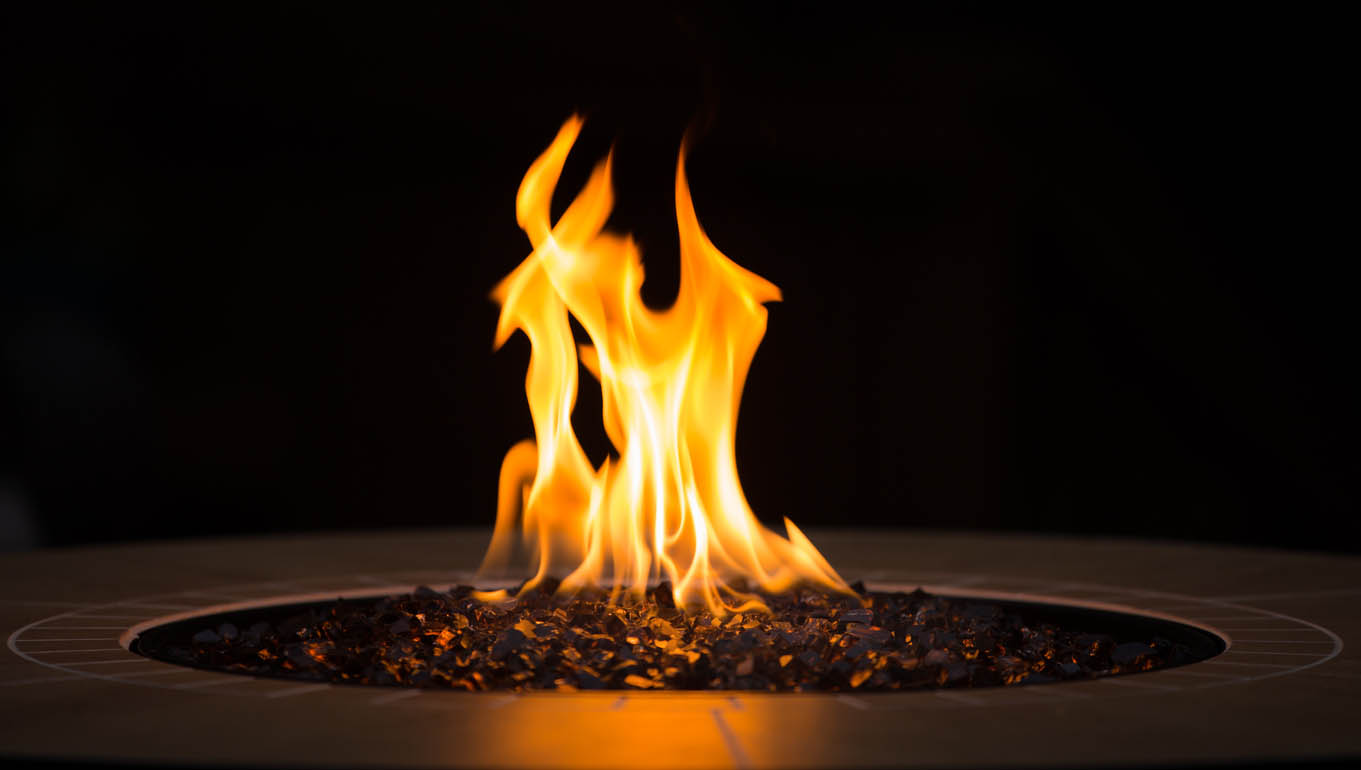
DO install a steel ring in the fire pit.
When building a fire pit, lining the innermost wall with a steel fire ring (available on Amazon from brands like Sunnydaze Decor) will prevent the wall material from drying out from regular exposure to the heat of the fire. As a non-combustible material, the steel will ward off heat and keep the wall itself from prematurely dehydrating and crumbling; this will preserve the looks and structural integrity of your fire pit longer.
DON’T construct your fire pit near potential fire hazards
You’ll, of course, want to position your fire pit well away from anything that is flammable. Build your fire pit 15-20 feet away from your house and any outbuildings—dog house, barn, detached garage, shed, pool house—on your property. While it might be tempting to place a fire pit on a deck, or under a pergola, do so only with caution, as these structures, too, are flammable.
And be mindful of plant life when you’re choosing a site for your fire pit. Stay well away from trees and plants—including long grass—which can catch fire if they are too close to your open fire. And as Mother Nature does her thing throughout the seasons, you may have to do occasional maintenance to keep the greenery at bay.
Finally, don’t place your fire pit under utility lines.
DO consider fuel supply equipment and emissions when determining fuel type.
Ethanol, propane, and natural gas are all sound fire pit fuel options as they emit no smoke, sparks, or embers, and leave no ashes to clean up. Ethanol, the cleanest of all fuel types (it additionally burns without odor), must be supplied via an ethanol tank or tray, and propane-fueled pits require a connection to a liquid propane tank. Natural gas-fueled fire pits have a more involved setup, however, as they require the gas company to install a supply line (do-it-yourself gas line installation isn’t recommended). While wood-burning fire pits require no gas lines, they kick up a high volume of smoke, sparks, and embers; call for frequent ash removal; and make large flames difficult to extinguish—all reasons why governmental entities commonly forbid them, particularly in urban areas.
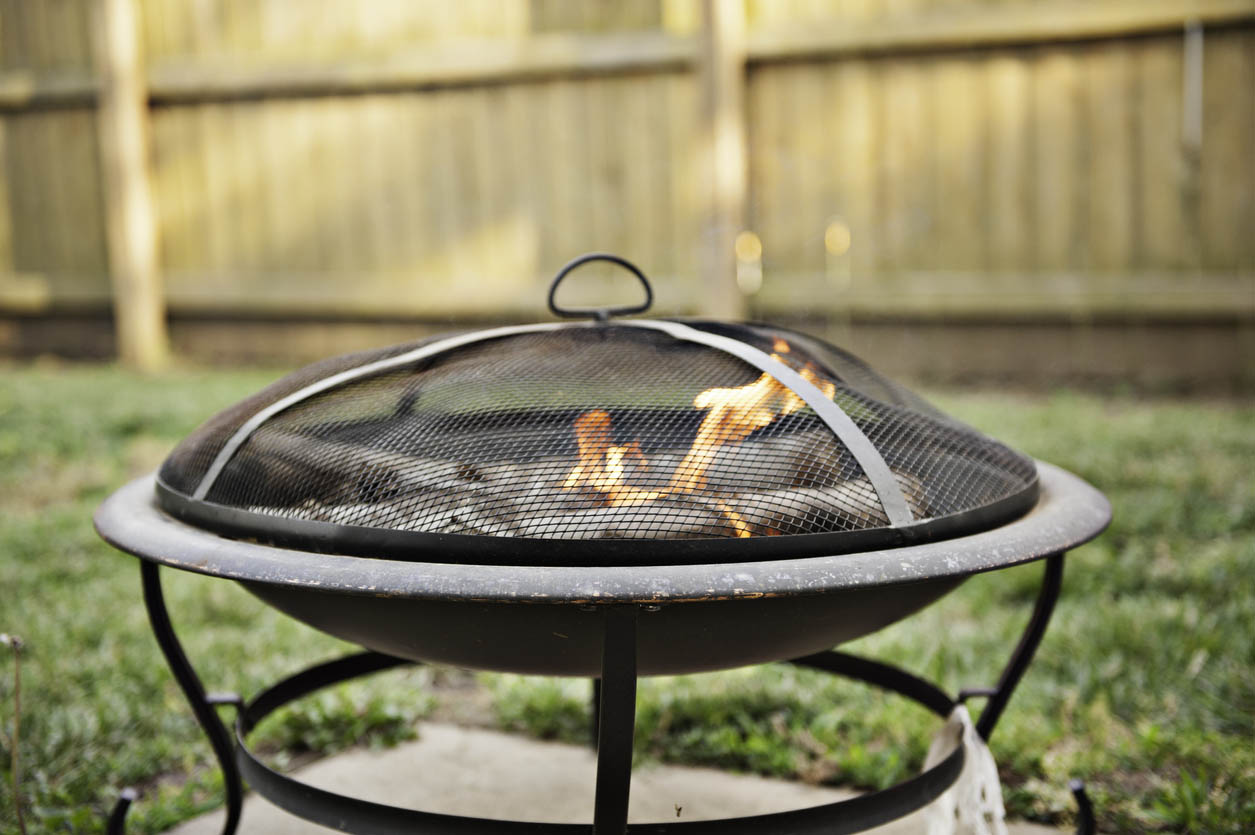
DON’T build a permanent fire pit if you have limited space
If your backyard is compact, you might want to consider constructing a portable fire pit, rather than a permanent one. For example, when the gang’s all over and s’mores are on the menu, bring the pit out of the garage or storage shed. On the other hand, when it’s time to roughhouse with Fido in the small yard, you’ll be glad not to have to navigate a large—and potentially dangerous—obstacle.
Another reason to choose a portable fire pit is its ability to be positioned and repositioned as you desire. Perhaps one weekend you’d like to host a neighborhood gathering, with the fire pit on display in the driveway to attract and welcome passersby. On other occasions, maybe you’d like a more private gathering with immediate family, and a cozy spot in the backyard makes more sense. Having a portable pit makes these options possible.
DO factor in return on investment when weighing building costs.
While a basic fire pit costs $700 on average, prices run the gamut from $300 for a DIY install of a homemade fire pit, to $1,400 or more for a professional install of a pre-built fire pit. That said, fire pits are such a coveted architectural feature nowadays that you can expect to recoup 78 percent of your investment when you sell your home.
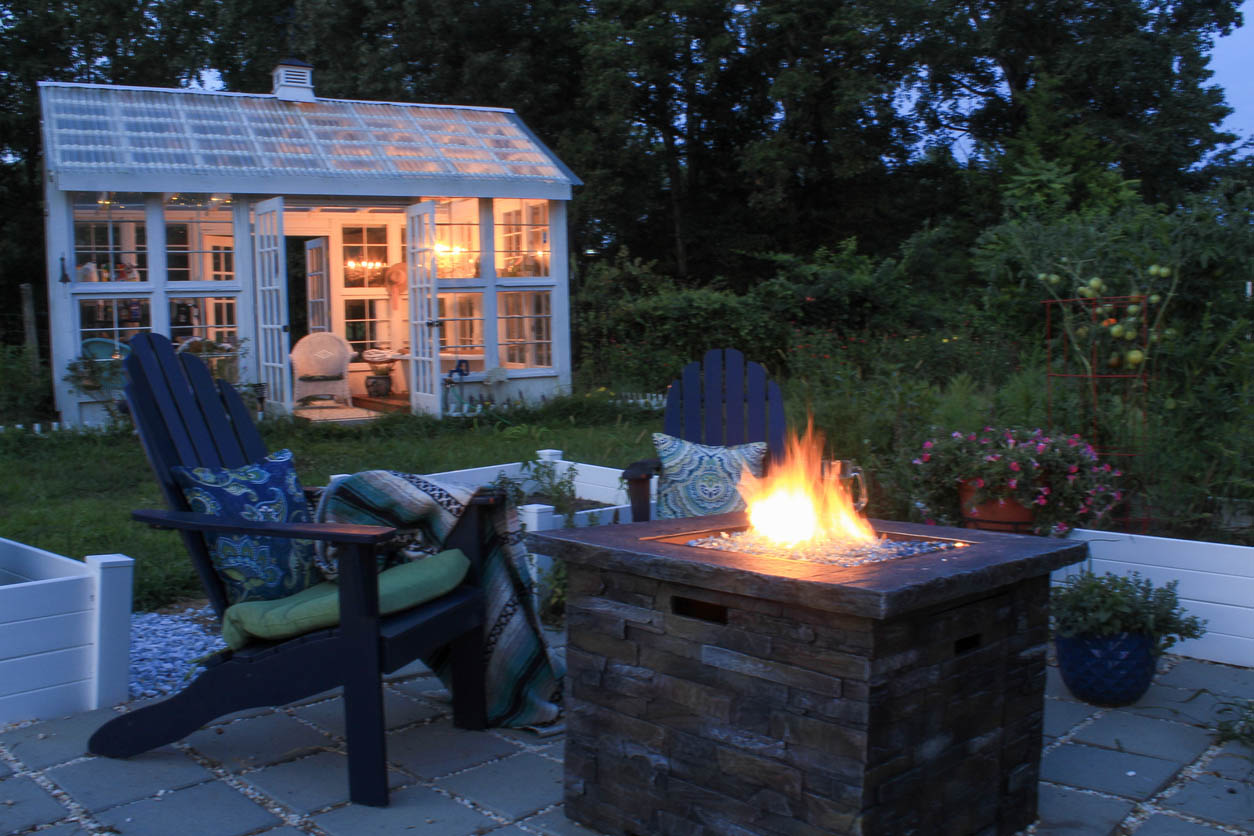
DON’T leave a fire unattended
If Smokey Bear had a backup catchphrase, it might be: “Only You Can Prevent Fires From Spreading.” As the owner/manager of a fire pit, it’s your responsibility to ensure that the fire remains contained in its pit. In a heartbeat, a stray ember can break off, get caught by the wind, and settle on a patch of dry grass a few feet away. This could spell disaster in the form of a devastating, raging fire that could cause indescribable heartbreak.
Prevent this by ensuring that your fire pit fire is always watched by an attentive adult. If you’re the party host and want to refill a guest’s drink, ask someone else to tend the flames while you’re away. Always. And always put the fire completely out before retiring for the evening. Spread out the embers/ashes and pour plenty of water on them to ensure the fire is truly out.
DO invest in fire safety gear.
If going forward with a fire pit installation, keep a fire blanket (a fire-retardant sheet usually made of fiberglass or Kevlar, available on Amazon from brands like Hot Headz) within reach to help smother a fire that has escaped its bounds..
Similarly, store a fire extinguisher in a nearby outdoor grill cabinet, shed, or garage. The extinguisher should be a multipurpose dry chemical model, which means it can effectively extinguish Class A (involving combustibles), B (involving flammable liquids), and C (electrical) fires.
You might also want to use a grill glove when handling a metal fire poker, as it can get hot if left too close to the fire.
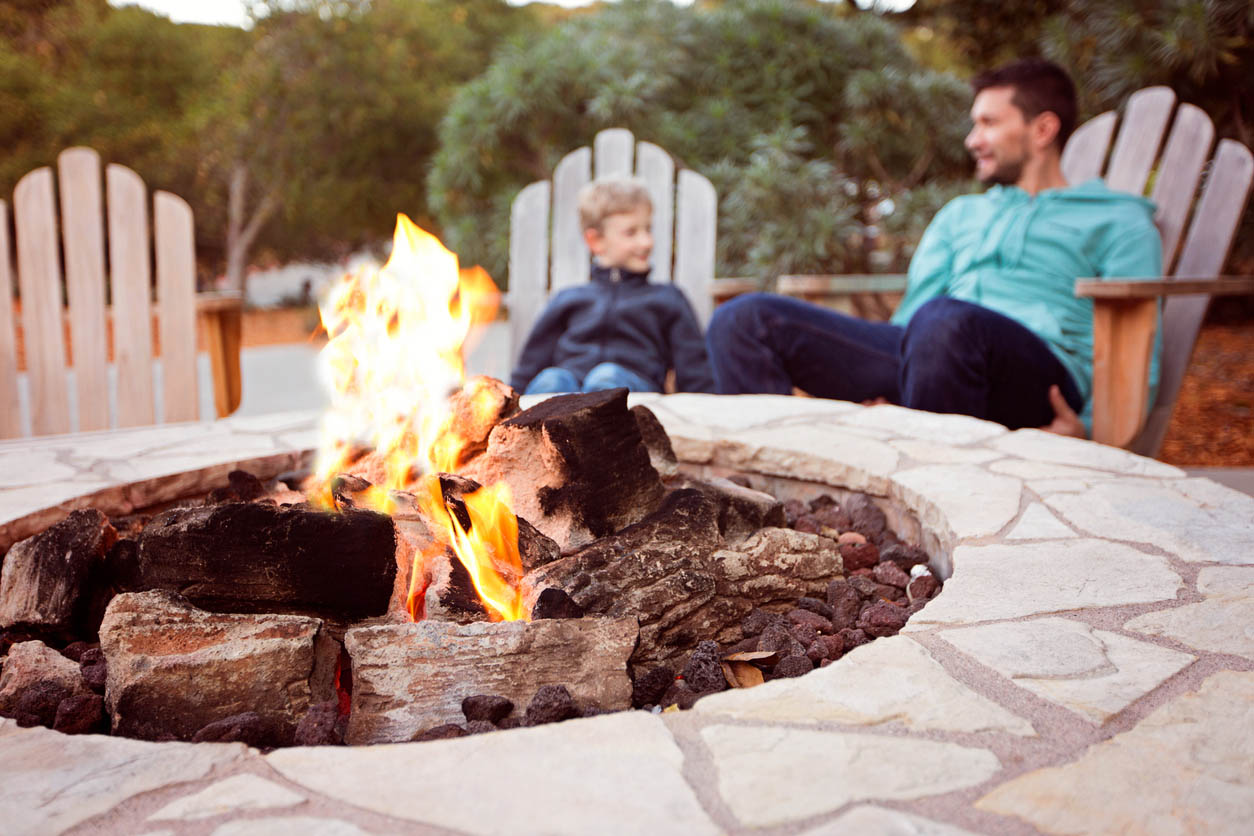
Additional Fire Pit Safety Tips
- Don’t use fire accelerants such as lighter fluid or gasoline. They release toxic fumes and can cause explosions. Optimally use wood shavings, kindling, or commercial fire starters or sticks.
- Keep a close eye on children and pets. They can move unexpectedly fast, and if you’re distracted with conversation about the latest episode of your favorite show, you could be faced with a disaster.
- Be sure your pieces of wood are sized appropriately for the size of your fire pit. Make sure ends are not overhanging the edges of the pit.
- Don’t throw paper or garbage into the fire. Burning bits can easily flutter off and create remote fire hazards.
- Stop adding wood to the fire about an hour before you anticipate moving indoors. This will allow the embers to die down and make the final dousing easier.
- When ashes are cool and dry, scoop them out and dispose of them. This will help make the next fire successful.
How to Build a Fire Pit Safely
Building a fire pit isn’t terribly difficult, and now that you have a good handle on the dos and don’ts, check out this high-level overview to get you started on crafting your own backyard fire pit.
First, gather all the supplies you’ll need to construct your fire pit. Determine the size, site and specific footprint of your fire pit. Clean up the site, removing grass and weeds if necessary.
Excavate about eight inches of dirt from the bottom of the pit, and then lay down about two inches of sand into the excavated area. Tamp down the sand to compact and level it.
Construct the walls of your fire pit, ensuring they’re level and stable. Finally, add a layer of gravel on top of the sand at the bottom of the pit

FAQ About Building a Fire Pit
What do you put in the bottom of a fire pit?
You’ll want to start with a layer of sand at the bottom of the pit, and then top the sand with gravel, lava rocks, fire pit glass, paving stones or even bricks for your fire pit. Alternatively, you can simply use dirt.
How do you prepare the ground for a fire pit?
Clear away all grass and plant material. Excavate about 8 inches of soil, ensuring that the bottom of the pit is level and the soil is compact.
Can you build a fire pit on dirt?
Yes, you can build a fire pit on dirt. Make sure the dirt is compact and level.
What is the best base for a fire pit?
You have several options. Plain dirt is fine, but sand topped with gravel makes a more attractive base.
Final Thoughts
Backyard entertaining is certainly enhanced with an attractive and functional DIY fire pit. And while you’ll definitely want to check local laws and regulations before installing one in your yard, once you do, you’ll be very happy you did. With a well-crafted, welcoming fire pit, built while carefully adhering to the dos and don’ts of building a fire pit, you might even get to know the neighbors better!
